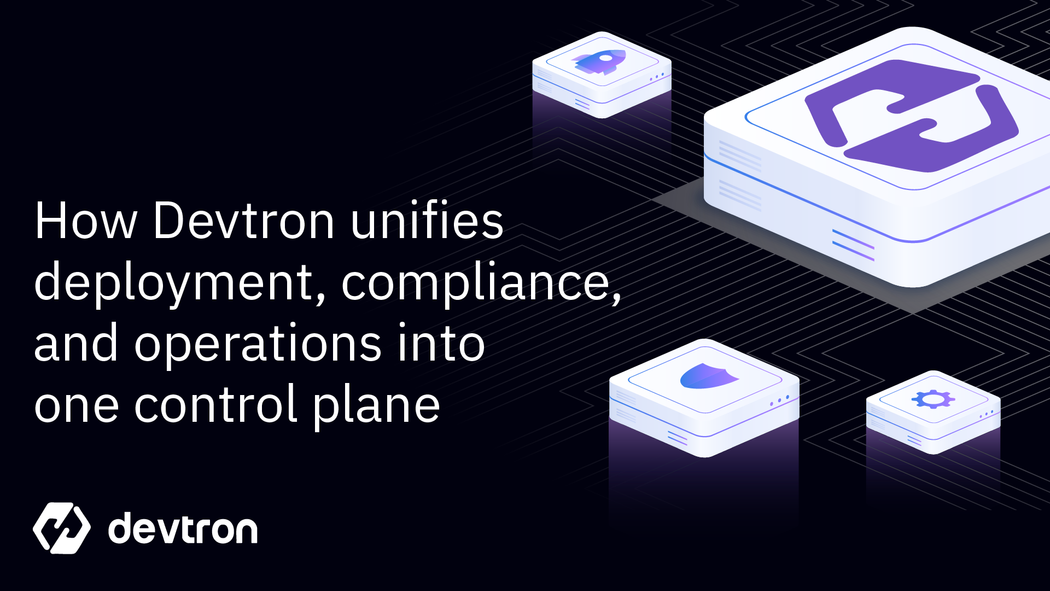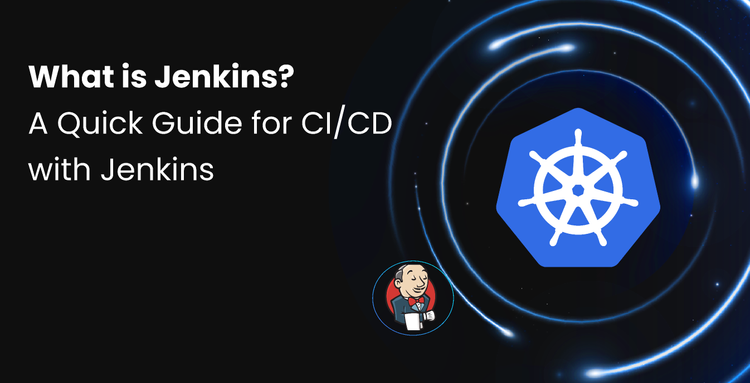You know the drill. Something breaks at 2 AM. You're trying to figure out what happened, so you open Grafana to check metrics, then jump to Jenkins to see what was deployed, then over to Argo CD to verify the actual state, then back to your security scanner to check if this could be related to that vulnerability from last week. Meanwhile, you're digging through Slack to find who approved the change, and oh right, you need to check the Jira ticket too.
By the time you've reconstructed what actually happened, you could have fixed the damn thing twice over.
I've talked to a lot of platform engineers about this, and the story is always the same. The tools themselves work fine. It's the fact that you need twelve of them to answer one question that's killing you.
The real problems this creates:
- Your security and compliance story is scattered across so many places that you can't actually answer "are we compliant?" without a spreadsheet and a week of work
- Incident response is mostly archaeology - manually piecing together timelines from disconnected systems
- You can't actually enforce the policies you write because they'd need to span six different tools
- Your observability stack can't tell you what changed because it doesn't know about your deployments
What Actually Gets Better With a Unified Platform
I’m not here to sell the tired “single pane of glass” story. What we mean by a unified platform is a smarter system. One that understands cross-domain context and connects deployment, compliance, and operations in a way that point tools never can.
Incidents actually get resolved faster When your deployment history, metrics, and logs share the same timeline, you're not manually correlating timestamps. The system can tell you what changed, what it affected, and what the logs say - all in context. You're investigating the problem, not reconstructing basic causality.
Compliance becomes queryable instead of reportable Instead of exporting data from six tools into a spreadsheet every quarter, you can just ask, "Show me everything out of policy." Your policy violations, security scans, and approval history live in the same data model. An audit becomes a query, not a data-gathering expedition.
You stop maintaining integration glue No more webhook debugging at midnight. No more "the sync between X and Y failed silently three days ago." No more credential rotation for fifteen API integrations. The platform handles the workflow end-to-end because it's all native.
You can actually see patterns When deployment data, security posture, and resource usage share a data model, you can answer strategic questions without a data team: Which services deploy most frequently? Where are vulnerability patterns showing up? What's actually driving our infrastructure costs? This stuff just falls out of integrated data instead of requiring manual correlation.
How Devtron Unifies Your Deployment, Compliance, and Operations
Deployments in One Place
Stop jumping between Jenkins, Argo CD, and your Git history to figure out what's deployed.
Devtron combines CI and CD in a single interface. Build, deploy, and manage releases without correlating timestamps across systems. Everything pipelines actually need, database migrations, pre/post-deployment tasks, notifications, lives in the pipeline definition, not in scripts hidden across repositories.
Deploy to multiple clusters from one dashboard. Support air-gapped environments. Roll back with one click instead of digging through Git commits.
Resources are organized by application. See what belongs together: manifests, logs, configs, and deployment history. When something breaks, you're looking directly at it, no SSH sessions, no bash scripts to match pod names, no six terminal windows open.
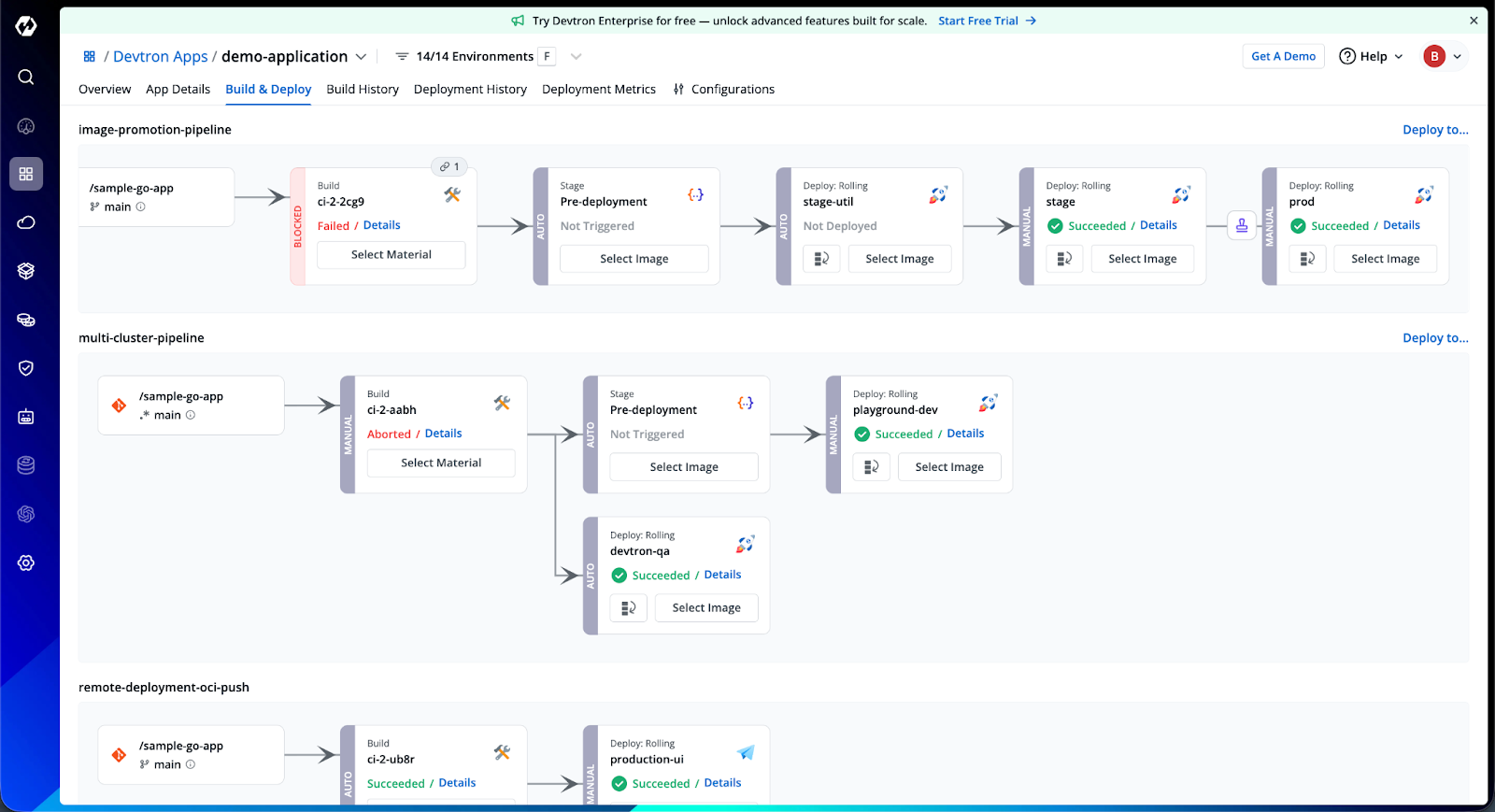
Security That Enforces Itself
You've seen this pattern: scans pass in one tool, but a different image gets deployed. Approvals happen in Jira while the pipeline bypasses them. Security becomes a wiki page that everyone ignores.
Devtron bakes security into the pipeline. Trivy (or your preferred scanner) runs automatically. Critical vulnerabilities block the build. Non-compliant code stops before production. It's not optional.
Set different policies for different contexts, finance apps get stricter rules than internal tools, and production requires more approvals than dev. Apply policies at the global, cluster, environment, or application level. They enforce automatically because they're part of the deployment, not documentation.
When violations occur, you get context immediately: which deployment, which vulnerability, which policy. No reconstructing timelines across disconnected systems. The audit trail exists.
Checks run during the pipeline. Developers get feedback fast and fix issues during development, not weeks later. Security stops being a bottleneck that people work around.
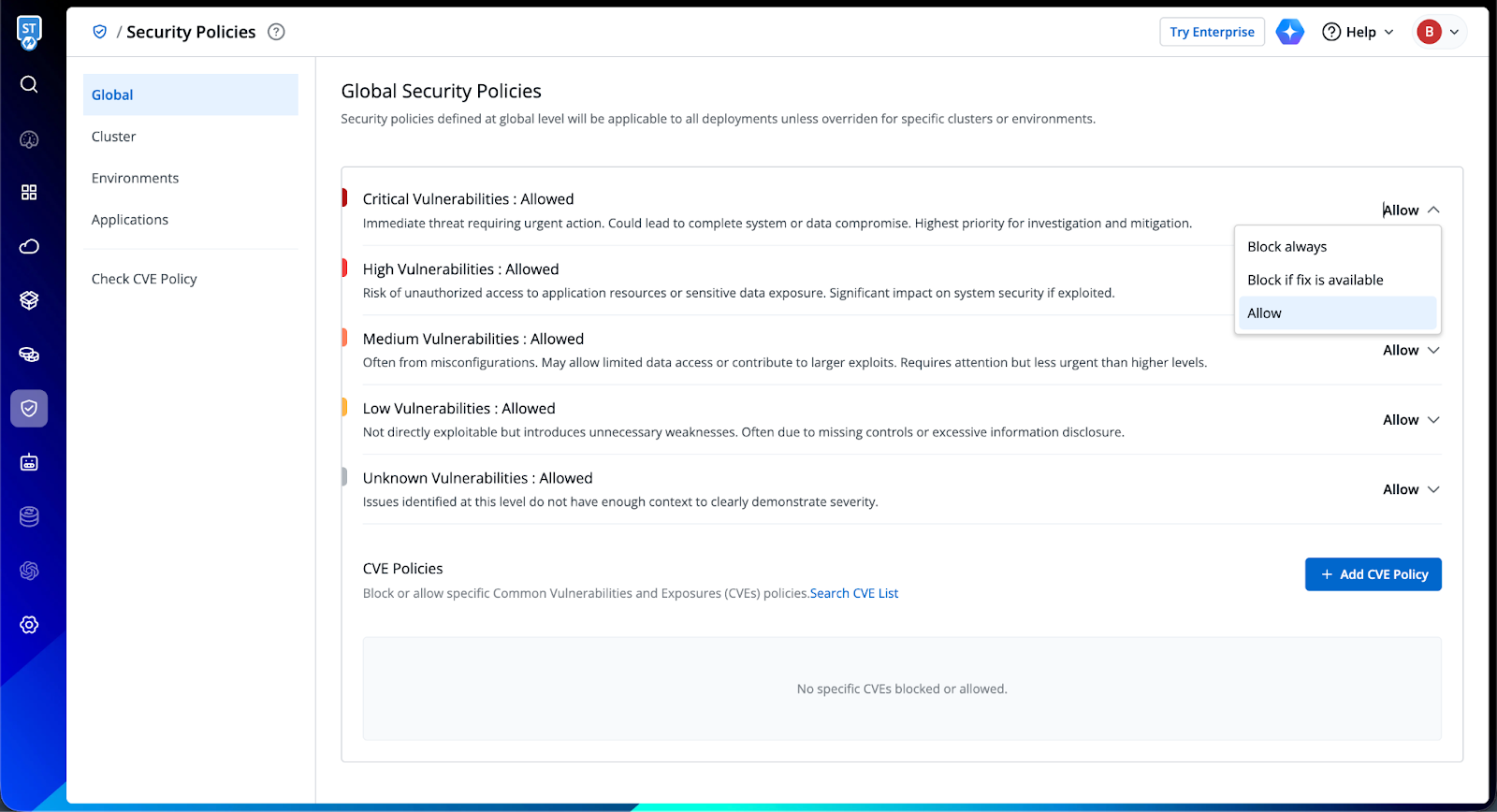
Operations Without the Chaos
At 2 AM, you don't want forensics. You want answers.
Open Devtron and see: what is deployed, what has changed, which pods are failing, and what the logs say. The deployment timeline sits next to metrics and logs. The platform already knows how your deployments, resources, and metrics connect.
One view across all clusters: dev, staging, production, and regional deployments. See deployment health, resource usage, and costs without switching contexts or running kubectl config use-context for the fifth time. No more "wait, did I just run that in prod?"
New team members can see application topology, dependencies, current state, and deployment history immediately. They don't need to ask which namespace, how services connect, or who set this up months ago.
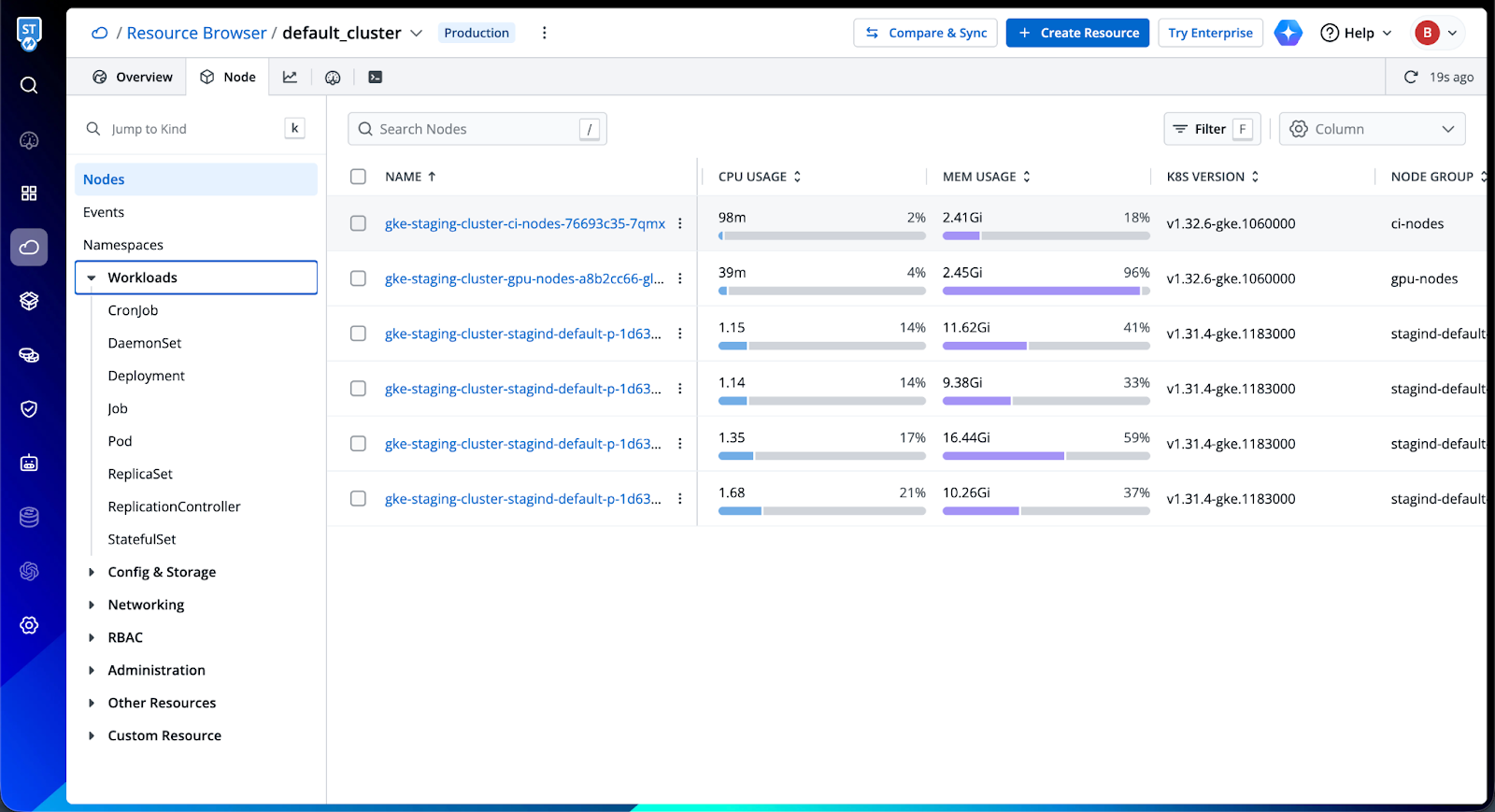
The Actual Point
Platform engineering isn't about buying fewer tools. It's about eliminating the cognitive overhead of maintaining twelve different mental models while trying to solve one problem.
When deployment, compliance, and operations share the same context, you stop doing integration work and start doing engineering work. The 2 AM incident gets resolved in minutes instead of hours because you're not manually connecting dots across disconnected systems. Compliance audits become queries instead of archeological digs. New team members become productive in days instead of months.
That's what a unified platform actually gets you: less time reconstructing reality, more time improving it.


